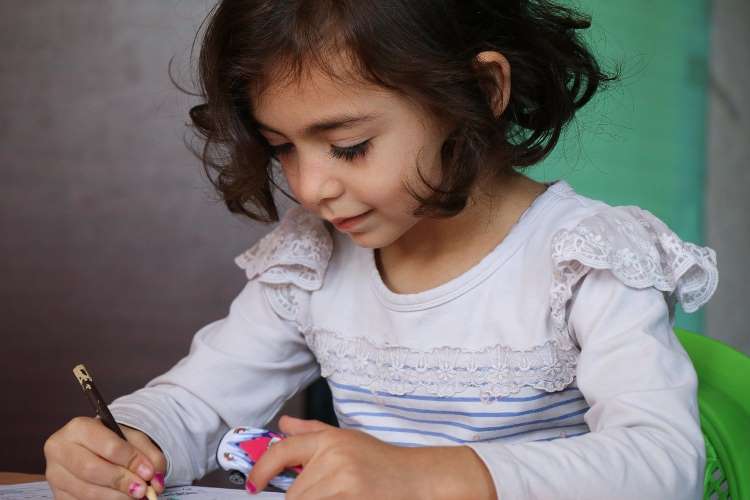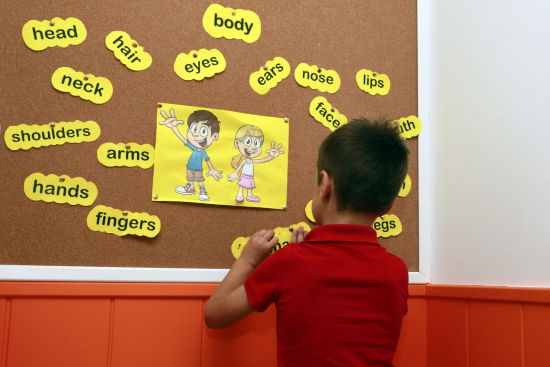Fun Listening and Speaking Activities for Children: Making Learning Interactive




You would have often seen that your child isn’t able to comprehend you properly. You might have observed that your child is at a loss for words while speaking and not feeling confident to talk to anyone. Such issues in children are a common problem, but parents shouldn’t neglect this. They are the ones who spend most of the time with their children, so you can help them overcome the inhibition to converse.
Every child learns in school, but they have to keep learning at home too, but not necessarily like the traditional methods. Teaching kids listening and speaking skills can be a lot of fun if done correctly. Introducing some fun listening and speaking activities for children will be the most prominent way to teach. So here is a list of some English conversation activities for kids.
Chinese Whisper or Telephone


This is a fun game, to begin with, and it is mostly played with a large group. So if you are living in a big family, you can gather around to play it, or else you can gather your children’s friends and play with them.
To play Chinese Whisper, everyone has to sit next to each other in a large circle. Then, one individual will whisper a sentence in the ears of someone sitting next to them. The whispering continues until the message reaches the last person. The last person to listen to the sentence will have to say it out loud. And the first person will say if the individual said the right sentence or not.
A wrong sentence means someone misheard the sentence in the middle or else someone intentionally told the wrong sentence to another participant. This will help the children improve their listening and speaking skills, as they will pay attention to what is being said, and try to pass on the right sentence.
Also Read: How to Make a Math Game for Kids? A Complete Guide to Make Your Kid Shine in Maths
Group Story Activity
Children are excited to listen to new stories every day, and many are fans of horror stories. So why not explore their imagination? With the group story activity, you can make your children listen and speak carefully.
It is a simple activity where one individual will start a story with a sentence, then another person adds one sentence to build up the story. And it goes like this until everyone has added a sentence to complete the story.
After everyone is done adding their bit, the end product is a whole new story. But the game requires concentration when listening to what others are saying and making a connection with your sentence.
It is majorly played in a large group but can also be played in small groups with each participant speaking more than once.
Simon Says
Simon says it is one of the classic English speaking activities for kids. The game requires the children to pay attention to whatever is being said. It is going to develop the habit of listening with a keen focus on your child. The game requires the participants to listen and respond to the instructions.
You will spell out the instructions to the children like “Simon says come two steps forward”, and the child has to follow the instruction. But if you give instructions and don’t begin with “Simon says”, for example, “Jump two steps back”, then the child mustn’t follow the instructions.
Your child should only follow the instructions starting with “Simon says”; they should keenly focus on what action you are instructing, and should they follow it or not. A similar game goes with the name ‘Do This, Do That’ where the kids have to follow only the instructions beginning with Do This, and stand still when the instruction starts with Do That.
Speech Writing
Children have a lot of thoughts in their mind now and then. So one of the best practices for speaking English would be speech writing. You might be wondering that it could be difficult for kids to practise speech writing. But it isn’t; let the kids write whatever they think about the topic. No matter if the sentences are right or wrong, or even if they make sense or not, just let them express their thoughts.
Once they have written the speech, instruct them to speak. They don’t have to memorise the speech; tell them to speak whatever they could remember. You can keep a reward to motivate them to speak. This activity would help the children put their thoughts adequately into speech.
Conversation with Partners
If you have two children or if you are a teacher, then this is among the most fun speaking activities for kids. The activity works as both a speaking and listening activity for the kids. Keep a list of general topics in hand with you.
Pair two children and give them a general topic to discuss. The topic should be in keeping with their age and area of knowledge and interest; difficult topics will not be productive for the activity. Among the pairs, each one will take a turn to be a speaker and a listener. Give them a time limit of 45 secs or a minute, and let the speaker speak. When they are done speaking, the listener has to repeat the major points from the speaker’s speech.
This activity will also help for the revision of studies. Allot the topics related to any theoretical subject; it will help the kids memorise the topics better.
Talk with Them
This is less of activity but more of regular practice to keep up with the listening and speaking habits of the kids. You should keep asking the children their views about various things, like asking them what their favourite cartoon is, what they like most about it and what they do not.
Ask them about the meals they eat daily, what they like to eat and what they don’t. Such a habit of speaking will keep them active, and they will engage in listening and answering precisely.
Conclusion
Such listening and speaking activities for kids are crucial for better learning. Kids might not follow and learn from the traditional teaching methods, but these activities will work on them. If you want to teach your kid more efficiently, then register your kid for the masterclasses at The Real School Of Montessori. It is one of the best online learning platforms where your kids can learn through innovative methods without feeling pressured.
Also Read: E-learning Websites & Apps for Kids: The Hassle-free Learning Experience Your Kid Needs
Recent Posts
What are the Advantages of Online Teaching at The Real School?
In the article -"What are the Advantages of Online Teaching at The Real School?" we…
What is the Full Form of School?: Unveiling the Acronym
The term "school" carries profound significance in the realm of education, representing more than just…
What is Math Full Form?: Cracking the Code
Mathematics, often referred to as "Math," is a subject that elicits various reactions from students…
What is Full Form of Homework?: Decoding Academics
Homework, an integral part of the academic journey, often raises questions about its purpose and…
What is Full Form of Teacher?: Demystifying Education
In the intricate tapestry of education, teachers stand as the pillars shaping the intellectual and…
What is Real Education?: Discovering Its Essence and Impact
The concept of real education is evolving, transcending traditional views that equate it solely with…


